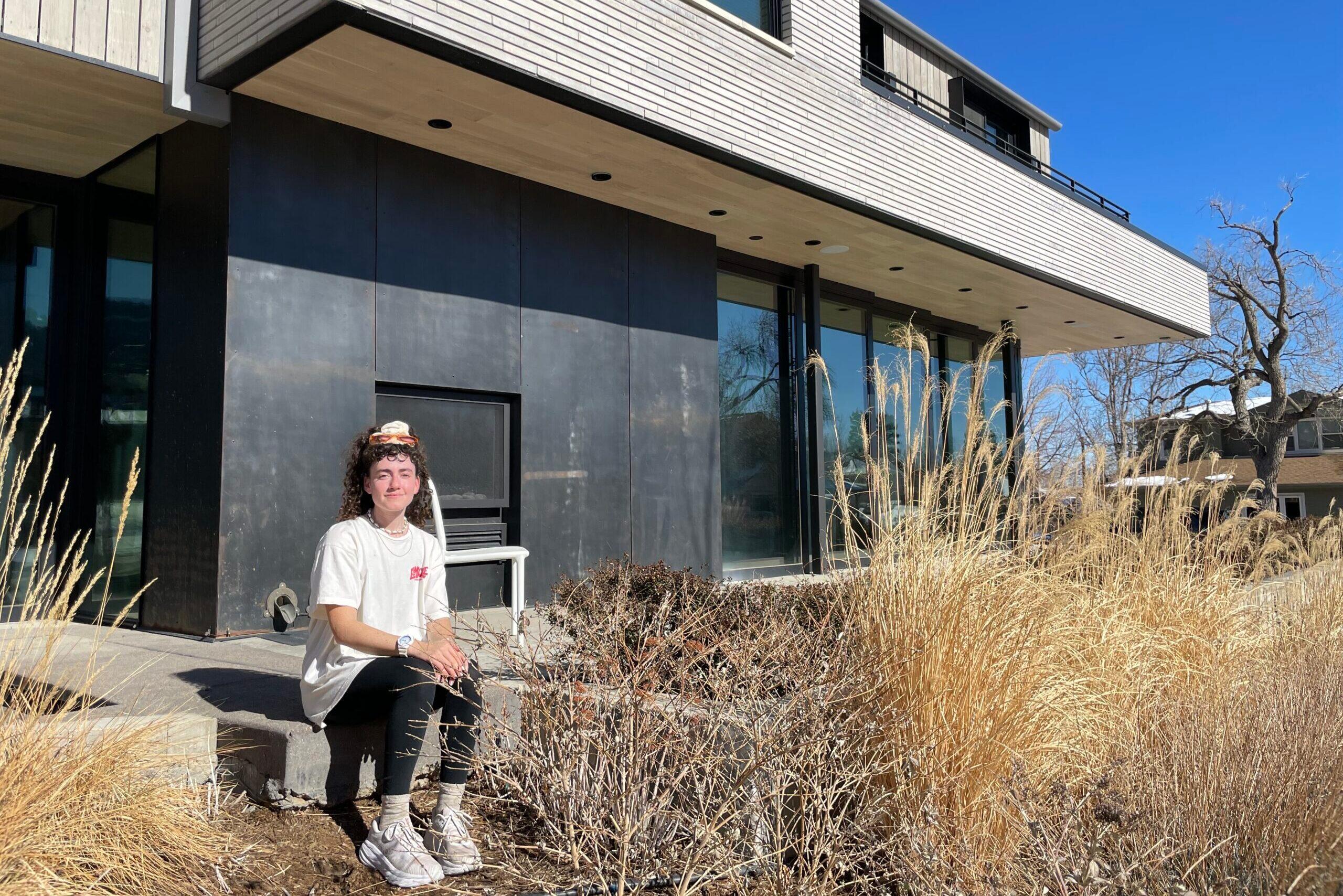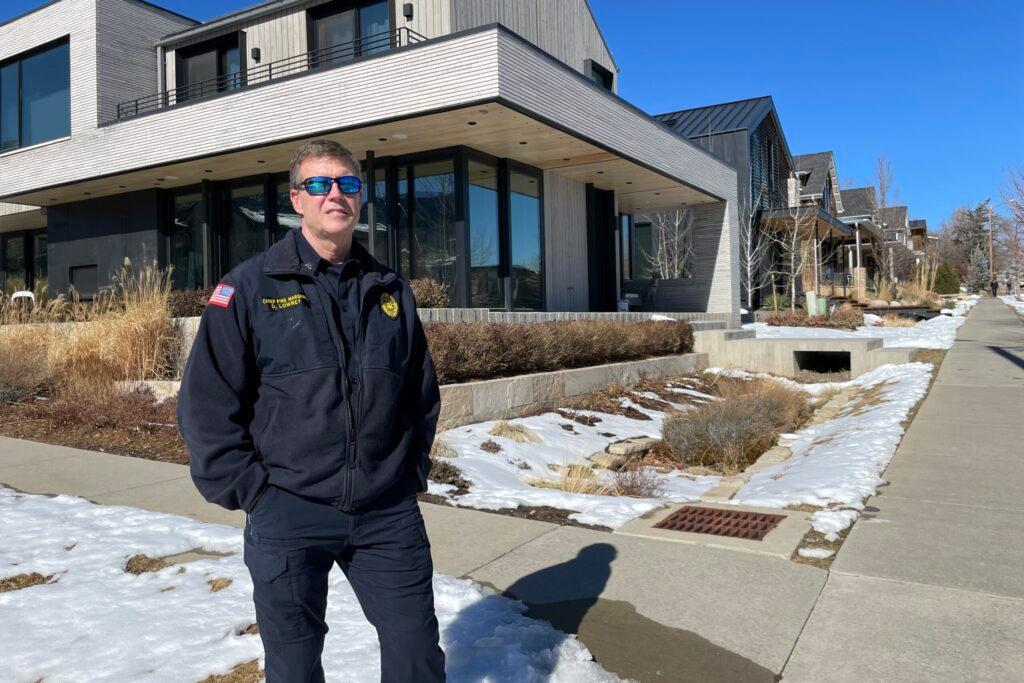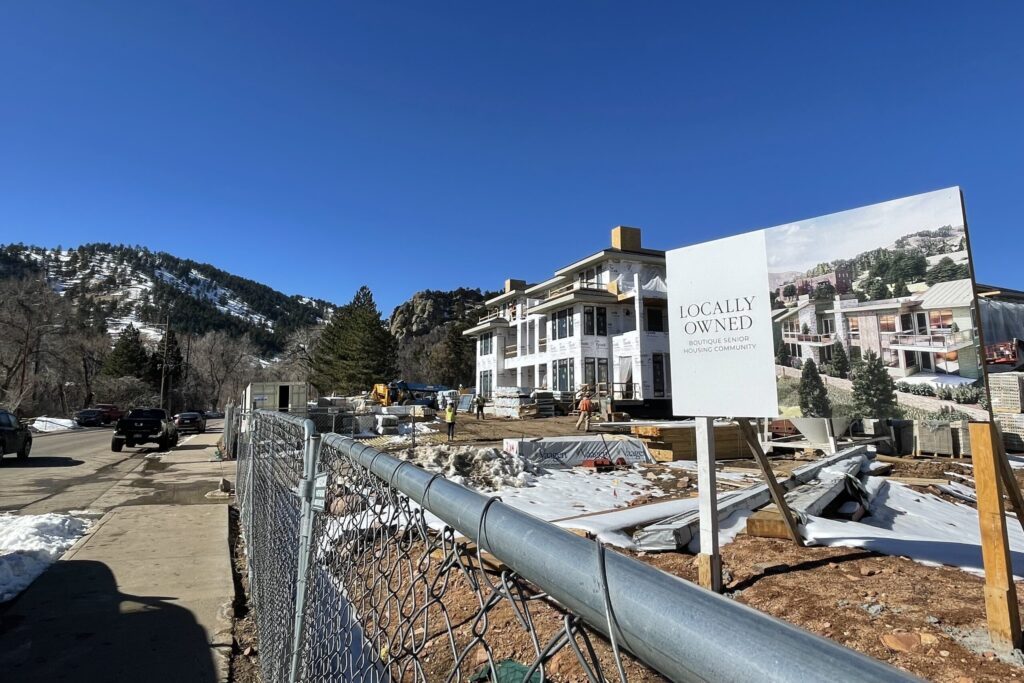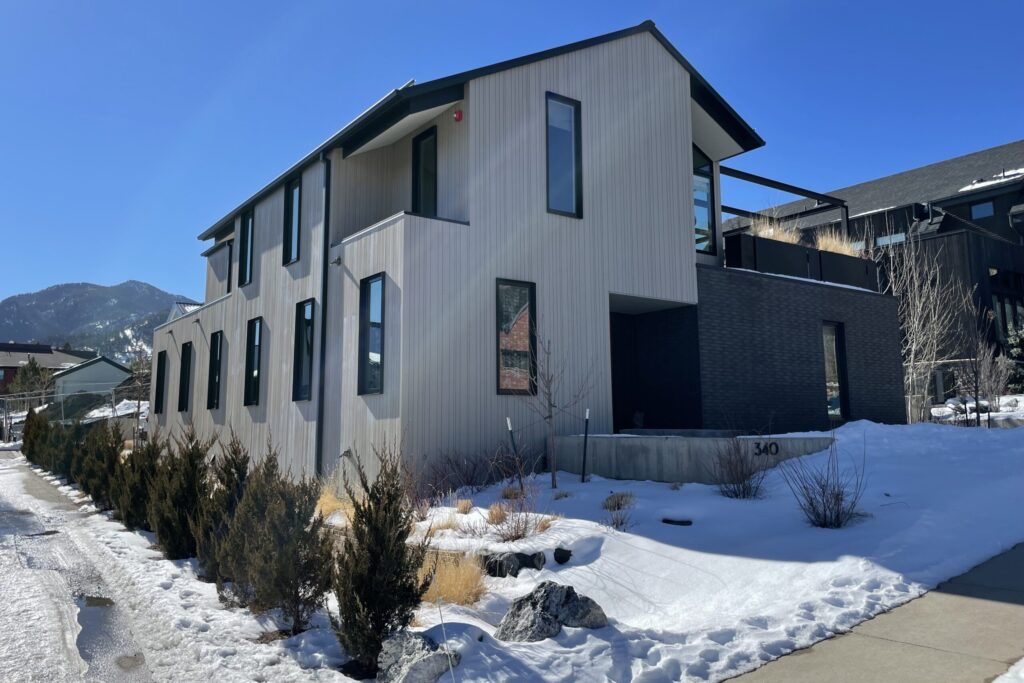
From the corner of 4th Street and Dewey Avenue, Boulder’s chief fire marshal David Lowery can point out the difference in how homes were built and how they might fare in a wildfire.
Homes to the west were built after the city decided that neighborhoods at a greater risk of wildfire damage needed to be constructed differently. These homes have metal roofs and are clad in a range of fire-resistant siding. Windows are made with thicker glass, and there’s gravel or concrete near the home’s foundation instead of shrubs.
On the east side of the street are older homes built with traditional materials and techniques. But even those don’t have wood-shingled roofs. After the Black Tiger fire in 1989 destroyed more than 40 homes in Boulder County, the city issued a mandate that all wood roofs needed to be gone by 2014.
Lowery said Boulder was one of the first communities in the United States to require the roofing change and consider how building materials matter in a wildfire. The city started changing regulations before a national wildfire building code existed. Once the code was created, Boulder adopted it in 2013.
After losing more than a thousand homes in the Marshall fire in December, both Louisville and Superior are considering doing the same.
Reconsidering which homes are at risk
Not all homes in the city of Boulder need to be built with stricter wildfire rules. Boulder pinpointed areas near forested areas close to the mountains, like where these newer homes on 4th Street were built. Lowery said it’s not just the homes that directly back up to the wild area that need to be built differently. He said houses a few streets or blocks in can create a protective barrier around an at-risk community.
The city has focused its stricter building codes on areas with lots of trees. But the Marshall fire, which destroyed more than a thousand homes in Boulder County in December, ignited in open grassy areas before it quickly moved into neighborhoods. Lowery said Boulder is now taking another look at what parts of the city could be at risk.
“Look at these prairie lands that surround some of these communities, and green belts or open space that a lot of our neighborhoods are built around. Those fall into a type of interface where a lot of people didn't look at it that way prior,” Lowery said.
Boulder is considering expanding its wildfire building requirements to other parts of the city, including grassy areas like those torched in the Marshall fire. The city of Boulder has little room to grow and space for new construction, which means expanding the rules would likely only apply to a small number of newly built homes, Lowery said.

The situation is different in Louisville and Superior. The two smaller suburban communities have more room for new homes and will see a boom in rebuilding after the Marshall fire, which is now considered the most destructive in state history.
Ana Bogusky owns one of the recently built Boulder homes, but she had no idea it was designed to withstand wildfire better. She’s relieved because she’s worried that climate change will mean more frequent wildfires. Her family evacuated during the Marshall fire, and the home her in-laws once lived in burned to the ground.
“I’ve always had that like sort of false sense of security, where you think, ‘Oh they won’t let the houses burn,’” Bogusky said. “But we’re just building so close to these areas, or in these areas, that have been known to burn and they can’t stop it. It’s scary.”
Bogusky’s daughter-in-law Jessica Milavitz also lives in the home. Milavitz grew up in the mountains of Boulder, and she said she’s been aware of wildfire danger her whole life. The fire risk is top of mind when looking for a future home.
“I would like, only consider areas that have burned recently. Like no deep forests or anything like that,” Milavitz said. “And I always thought of like, further east [Boulder County] as the really safe area. [The Marshall fire] proves like, nowhere’s really safe anymore.”
Milavitz said there’s a lot of anxiety when it comes to planning your life with climate change. A wildfire-resistant home might be part of that equation.

A wildfire-resistant home could be more expensive to build.
Lisa Ritchie, the principal city planner for Louisville, said the city is investigating how homes burned in the Marshall fire and what factors helped others survive. Officials are trying to figure out how the city could change its building regulations to better protect homes, businesses and lives. But she said the city is also trying to figure out how construction standards designed for forest fires might work for communities in grassy regions.
“Most of these codes are adopted and written in communities that are heavily forested,” Ritchie said. “What does that mean for our Front Range communities adjacent to grasslands?”
Ritchie said the city is also considering an incentive program where certain construction fees are reduced if a home is built with wildfire-resistant materials.
As the city makes a decision, some who lost their homes in the fire are eager to rebuild — an urgency that has fueled tension around another set of recently adopted building codes to reduce climate-warming emissions and promote renewable energy. Ritchie said it’s likely that rebuilding will start before the city takes action on any new building codes.
“I think collectively it’s better to get it right than to rush it,” Ritchie said.
A new study from Headwaters Economics finds that it can be more expensive to build a home with wildfire-resistant material. Kimiko Barrett, the lead wildfire researcher and policy analyst with the nonpartisan research group, said a new home’s location matters when it comes to building prices. Previous research from Headwaters found that a typical home in Montana would be slightly less expensive when built with fire-resistant construction. Factors like local material availability and building code requirements are part of that equation, Barrett said. The initial study was done in 2018, and the latest analysis, which is expected to publish soon, was done in California.
The biggest price differences arise when builders and homeowners pick premium construction materials, like steel roofs and decks and stucco siding. She said that homeowners can keep the costs down by choosing more basic materials for wildfire-resistant homes. Barrett said many Colorado homeowners already prefer wildfire-resistant construction materials, like asphalt roofing.
Retrofitting existing homes with wildfire-resistant materials is often more expensive, Barrett said. The goal of designing homes and neighborhoods with wildfire in mind is to slow the spread of flames, so firefighters have a chance to contain the flames, which was impossible with the Marshall fire, which spread rapidly through drought-baked fields amid 100 mph winds.
“You’re still going to have damage. We don’t have a thing called a fireproof home unless you’ve built a concrete bunker,” Barret said. “There will be smoke damage. You may have a piece of your wall fall in, your deck might burn. But that firefighter can get there.”
Most people who lost their homes in Superior and Louisville were underinsured, and residents are worried about what it might cost them to rebuild to stricter standards. Ritchie said that’s even more reason for leaders in Louisville and Superior to take their time evaluating stricter building standards and how to adapt to human-caused climate change.
Editor's note: This story has been updated to more accurately describe the research on the cost of building homes with fire-resistant material.










